When I had stuffed myself with enough streetside potato empanadas, I flew from La Paz to Santa Cruz. My dream was to see the wild jaguars in the forests near Santa Cruz, amongst the many other things to do in Santa Cruz Bolivia.
Drifting off through a one-hour flight and waking up to chew upon the dry fruits that the Boliviana de Aviación attendant served, I landed at the Viru Viru international airport and hopped onto the airport shuttle to go to the central plaza. My travel friend was staying in a fancy hostel there.
As always, I had not read much about Santa Cruz. But my curiosity to talk to the local people makes up for my lethargic online research, mostly. In a casual conversation, the manager of the Santa Cruz airport shuttle told me that Bolivia was still furious about losing the Pacific coast to Chile. He added that the elite businessman and politicians of that wealthy city we were in had stopped caring as they were busy securing their bank balances.
And that is how I was introduced to Santa Cruz, a city where you would forget that you are in Bolivia, if not for the cholitas selling sinful salteñas on the roadside.
Flying off in the teleféricos of La Paz, I thought that I had seen the largest city of Bolivia. But when the collectivo driver drove onto the taut bridges and wide underpasses of Santa Cruz and dropped me at a junction close to the central plaza, I saw that Santa Cruz was not just another poor Bolivian city.
Carrying my rucksack on the back and my backpack in the front, I crossed the Plaza 24 de Septiembre and walked into a huge park which was to lead me to my hostel. And that is when the rain started pouring down hard. While getting soaked I fretted about the possibility of the rain messing our jungle plans.
The grey clouds hovering over my head must have read my mind because they poured down hard for the next few days. So when we went to the Nick tour company, one of the famous Santa Cruz travel agencies, and said we wanted to see jaguars, Nick told us that the rain had washed down the national parks. So neither it was safe nor easy to find jaguars in that monsoon month of March.
I should have known that jaguars won’t come out in the monsoon for they were getting enough capybaras and water even in the thick jungle. Dreams were hit by reality and my lack of travel preparation.
And that is when I started focusing on the city. Large magnificent independent houses fringed the streets of Santa Cruz, the city was studded with lush green parks, expensive cars such as Porsche and BMWs lined the entrance gates of the enormous mansions, imposing malls towered in the skyline, discothèques blasted into the night, and high-end restaurants called out from every corner.
Santa Cruz was a lot more than just being an escape into the wild.
Travelers backpacking Bolivia usually skip this eastern city which is out of the typical Uyuni saltflats-Potosi-Sucre-LaPaz (and the vice-versa) route. But there is a story to Santa Cruz, one of the wealthiest city of plurinational Bolivia. The eastern Bolivian lowlands, where Santa Cruz lies, are rich in natural resources and mineral deposits, oil and gas are found in plenty here, agriculture and forests flourish in the tropical climate of the plains, and the greenery makes it one of the largest producers of the beef cattle. The dairy industry milks money here, too.
But abundant resources have also brought in a lot of trouble for the rich eastern farmers, entrepreneurs, and industrialists as president Morales has been pushing the east to bear the heaviest taxes as per his social reform strategies. His desire to have stronger control over the eastern lowlands and redistribute wealth and land of the rich there has been met with a strong demand for autonomy from the eastern population.
Now the east which mostly comprises of the racially mixed or “mestizos” (30 percent of Bolivia’s population) and Europeans (15 percent) have autonomy, but the people there say that its presence on the paper needs to be put in practice. Of course, this push from the rich of the east has infuriated the indigenous and the poor who would have benefitted from the reforms of cocalero Morales.
That is why the collectivo manager said that the wealthy people of Santa Cruz didn’t care about the country.
Apart from putting across an interesting political scenario of Bolivia, Santa Cruz also makes an excellent preparation stop before you hop onto the altiplano Bolivia as the altitude of Santa Cruz is 415 meters as compared to the 4000 meters of the rest of Bolivia.
The best things to do in Santa Cruz Bolivia and places to visit
Chill at the plaza central and climb up the church
If you have been travelling South America for some time, you would know that the plaza central or the square is an integral part of every city.
As we don’t have a plaza in India, I sat at the Latin-American squares until I got tired of watching the children shooing away the hundreds of pigeons and listening to the couples, college friends, groups of old Bolivian men and women chatting away with sugary coffee about everyday life.
After a siesta at the plaza, I climbed the spiral staircase of the church. If you aren’t dizzy by the time you reach the top, you can even spot falcons atop antennas.
Watch the movements at the plaza from the top of the church, and you would feel distant from the place you were at just a few minutes ago. And when you leave can you say hi to an old man who gleefully threw away my bottle when I handed it to him for he liked collecting garbage from the plaza and putting it in the dustbin.
Related Read: My Best Travel tips for South America
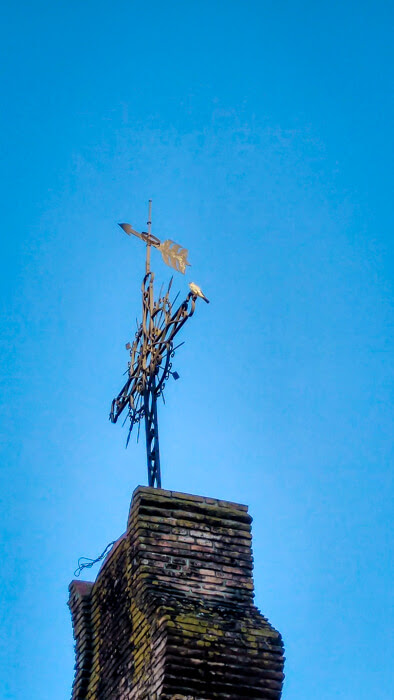
Visit Santa Cruz Botanical Garden
Almost half an hour away by car from the plaza central, the botanical gardens offered a lush green respite from the city. And when one of the English guys I went to the garden with fell in a puddle of dirty water, we had enough to laugh about during the few hours we explored flora and fauna there.
We saw hungry coyotes, giant turtles and butterflies, orange squirrels, and colorful birds in the garden. When you go there please take mosquito repellant and wear long sleeves shirt and full-length track pants for as soon as the sunset the mosquitoes attacked us from all directions. The park didn’t have any options to eat, so the sandwich I had made, and the golden bananas I carried prevented me from stealing the food of the animals.
Hike in the Amboro National Park or Parque Amboro
Amboro national park is accessible both from Santa Cruz and Samaipata, and the distance to the park from Santa Cruz is 40 kilometers. I went to the park from Samaipata, from where the jungle was a little closer.
This 4,400 square kilometers park is so old that it houses ferns which used to be dinosaur food. The three ecosystems of the foothills of the Andes, the northern Chaco, and the Amazon Basin meet in the park to create a hospitable environment for a wide range of plants and animals.
The park can be accessed both from the north and the south. But if you go there from the north, which is what I did, you would only be able to walk around in the 3-kilometer lines inside a red line which divides the park into two conservation zones. Though the park is home to hundreds of species of birds, animals, reptiles, mammals, and plants, I didn’t see much animals on that 3 km hike, but throughout the day we were surrounded by thick forest and colorful mushrooms.
I did a one-day walking tour, but you can also opt for two days and one night tour in which you can see the interior forest which includes the waterfalls of Jardin de las Delícias, the river Cajones del Ichilo, and the Laguna Verde. Maybe you are even lucky to spot caymans, bear, and condors while you are there.
If you opt for a tour, they will book a night stay for you. But if you want to book by yourself, here are some good places that I came across.
Eco-friendly, budget stay and camping area along with food – La Chonta
Here is another community-run, budget lodge- La Yunga Eco Lodge
I haven’t stayed at both the above places, but the prices and the online descriptions sound authentic enough that I would be happy to choose either one of them when I visit the next time.
Sandboard down the dunes of Parque Lomas de Arena
These dunes are about 18 kilometers away from plaza principal 24 de septiembre. Though I couldn’t go there for the weather was wet, my research which would help you out if you are planning a day trip to these dunes.
Many tour companies offer tours to the dunes, but as you know I never advise a tour until it is absolutely necessary. Let me tell you how to reach the place by yourself.
You can take a collectivo from the center or hire a taxi which will drive you to the dunes. The drive lasts about 45 minutes. You have to pay approximately 10 bolivianos at the entrance. The collectivo would leave you at the gate from where you have to walk seven kilometers (for about an hour and a half) to get to the dunes. Some other travelers in my hostel who had been to the dunes said that accessing them was difficult even with a car for they had to walk the last few kilometers.
The hard work to reach the dunes would be hopefully paid off by the sandboarding experience. If not, there is a blue lagoon in the dunes which is good for watching birds. You can also walk around the thick forest that surrounds the dunes and spot sloths, capybaras, caimans, monkeys, and pumas, too.
See Jaguars while in Santa Cruz
You might be in Santa Cruz because you also want to see jaguars as I did.
But before becoming melancholic about how I couldn’t visit the national parks because of the rain, I will tell you how you can come face to face with the jaguars that flourish near Santa Cruz.
You have two options:
1. San Miguelito Jaguar Conservation Ranch – San Miguelito ranch is about three kilometers from Santa Cruz.
The farmers and cattle ranch owners around this conservation space were killing jaguars for the cats were attacking their cattle and causing loss to the farmers. This ranch was opened up to save the jaguars. Now the money that the ranch earns from tourists is given to the farmers whose cattle are killed by the jaguars. When the farmers are compensated for their loss, they don’t kill the wild cats, and everyone lives in peace.
You can only go to this eco-friendly ranch with a tour. When I looked around for a tour company in Santa Cruz, I found out that the only agency that arranged tours to this ranch was the Nick travel company. I would still recommend you to walk into the local tour company offices and ask.
The Nicks told us that March was a bad season to see jaguars. So if you want to see jaguars, or the six other kinds of cats and anteaters, giant armadillos, caimans, monkeys, peccaries, and deer, go in the dry months that is from May to September.
The tours were mostly three days and two nights or two days and one night long.
2. Kaa Iya National Park – Kaa Iya is Bolivia’s largest national park and is managed and run by the indigenous communities inhabiting the areas around the park with the support of the government. This 34,000 square kilometers national park is popular for spotting jaguars, tapirs, pumas, ocelots, turtles, foxes, birds, snakes, and jaguars.
You have to visit this park with a tour company. You might want to try the Amboro tour company which has good reviews.
This forest is dry, more like a dry African savanna, and temperature can get up to 40 degrees. So prepare accordingly.
Go see the jaguars and other wildlife in Pantanal, Brazil
If you can’t visit the San Miguelito conservation ranch or the Kaa Iya national park, you can still cross onto the Brazil side and visit the Pantanal area which is popular for an insane amount of wildlife walking freely. You will believe me when you see the wildlife of Pantanal in this article.
From Santa Cruz, you can take the Death Train to Quijarro on the Bolivian side of the border.
Or you can go to the terminal de buses Santa Cruz and buy a bus ticket to Quijarro from there. But beware of fraud as the bus services are known to leave the passengers at the border though they had promised to take them to Quijarro.
Go to Samaipata when you are bored
And when you are done with all the things to see in Santa Cruz, you can go to a Samaipata, a quaint village near Santa Cruz. I suggest you go to Samaipata, and you will know why I recommended this town when you lose track of time there soaking in nature and drinking coffee at the plaza.
Here is my experience in detail along with things to do in Samaipata, Bolivia.
I am also guilty of relaxing in the green park in front of my hostel, watching men play football, which is a craze in Bolivia, or sitting at the plaza and drinking coffee while the local life went on.
Even though Santa Cruz is crowded with malls and the regular metropolitan chaos buzzed through the city, it is an excellent place to slow down.
Also Read: My ultimate Bolivia backpacking guide
Places to eat in Santa Cruz
When you go around the city, you will find a lot of street vendors and local markets to eat at.
While walking back to the hostel one day, I stumbled into two brothers from Egypt who were selling delicious shawarmas on the road. We chatted, and I ate chicken shawarma there. Then another day we found a tiny restaurant which sold coal-grilled black-pepper chicken which was so juicy that when I think of it, I curse myself for quitting non-vegetarian food.
I even went all in and ate at the Indian restaurant called Taj Mahal ( the internet says it is closed now). I ordered a dal, bhuna gosht, mango lassi, chapatis, cauliflower paratha, chai, and gulab jamun and fixed my cravings. All the food was made in ghee and wasn’t spicy. After gobbling down three thick chapatis and warming my stomach with warm chai, I took a taxi back to the town.
My friend ate lizard at the Aljibe restaurant which is known for the traditional food of Bolivia. Though the lizard tasted good, I stuck to the typical milanesa de pollo.
We ate a lot of salteñas and empanadas by the roadside. You will even find many roadside crepe places as you walk around. We tried the crepes made out of milk, cheese, butter, and cornflour and got addicted to them for they were delicious.
Rest of the meals were at the tiny stalls, or in the hostel kitchen when I cooked quinoa with fresh vegetables.
Where to stay in Santa Cruz
I stayed at the comfortable Jodanga hostel and paid almost 80 bolivianos or 12 USD for a bed in an 8-bed mixed dormitory. The hostel is always busy with travelers. They have a big swimming pool, a pool table, a kitchen, a bar, a common room with television, multiple shared bathrooms, and is walkable from the central plaza. You will have a comfortable and fun stay here.
How to travel to Santa Cruz
You can fly to Santa Cruz from La Paz or any other big city in Bolivia. The flights within Bolivia are cheap and save you a lot of hassle. I found a cheap Boliviana de Aviación flight for 75 dollars from La Paz to Santa Cruz. Then at the Viri Viri international airport, you can either take a taxi or get into the Santa Cruz airport shuttle to arrive at the center.
You can also take a bus to Santa Cruz. The journey from La Paz to Santa Cruz would be of about 18 hours for you have to cover almost 850 kilometers.
Santa Cruz was one of the best places to visit in Bolivia to understand the country from the demographics’ perspective and for an escape into the exquisite Bolivian wildlife.
Will you add Santa Cruz de la Sierra to your Bolivia itinerary now? Did you like my list of the best places to visit in Santa Cruz Bolivia?
Like my guide? Please pin it so that more people can read. Thank you.
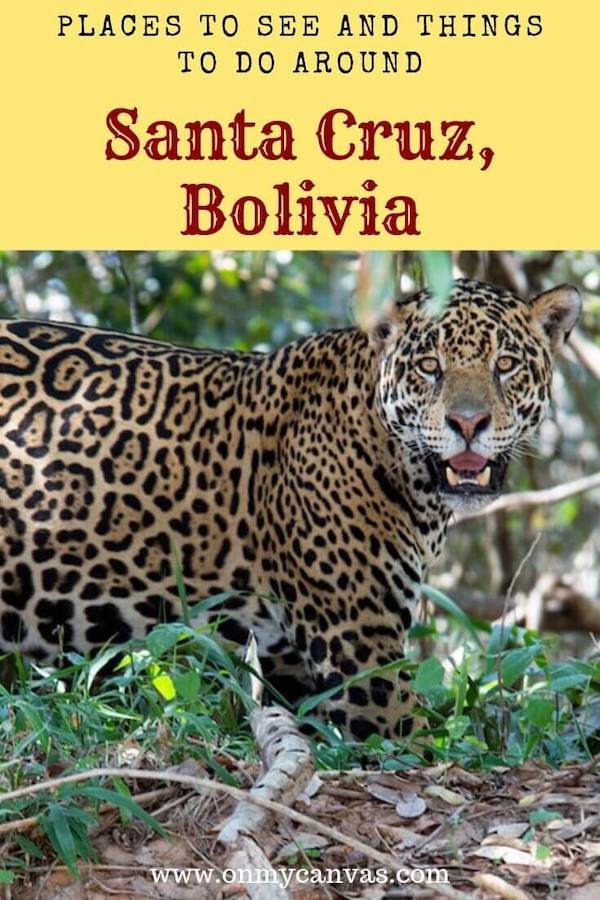
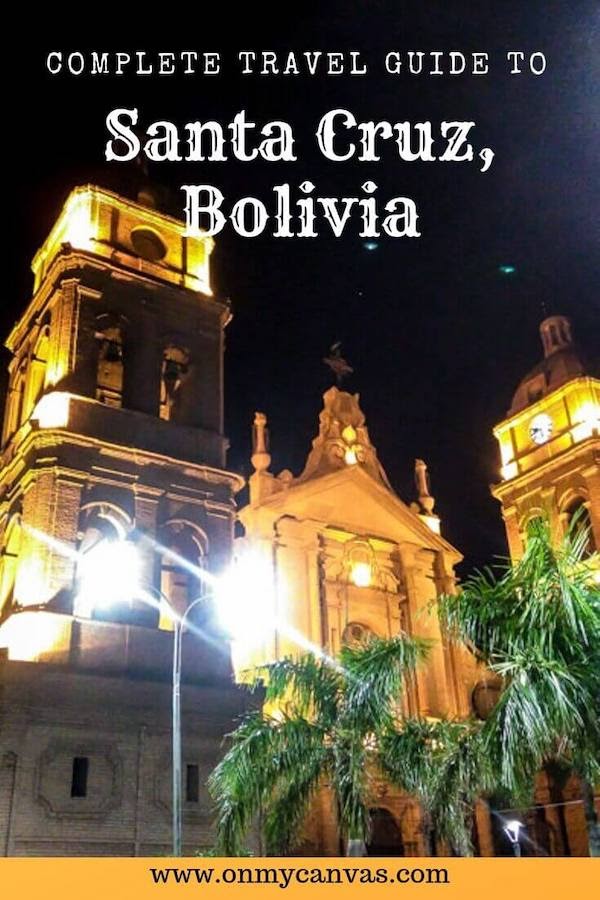
Feature Image Credit: AriomPardo, CC BY-SA 4.0, via Wikimedia Commons
*****
My much-awaited travel memoir
Journeys Beyond and Within…
is here!
In my usual self-deprecating, vivid narrative style (that you love so much, ahem), I have put out my most unusual and challenging adventures. Embarrassingly honest, witty, and introspective, the book will entertain you if not also inspire you to travel, rediscover home, and leap over the boundaries.
Grab your copy now!
Ebook, paperback, and hardcase available on Amazon worldwide. Make some ice tea and get reading 🙂
*****
*****
Want similar inspiration and ideas in your inbox? Subscribe to my free weekly newsletter "Looking Inwards"!

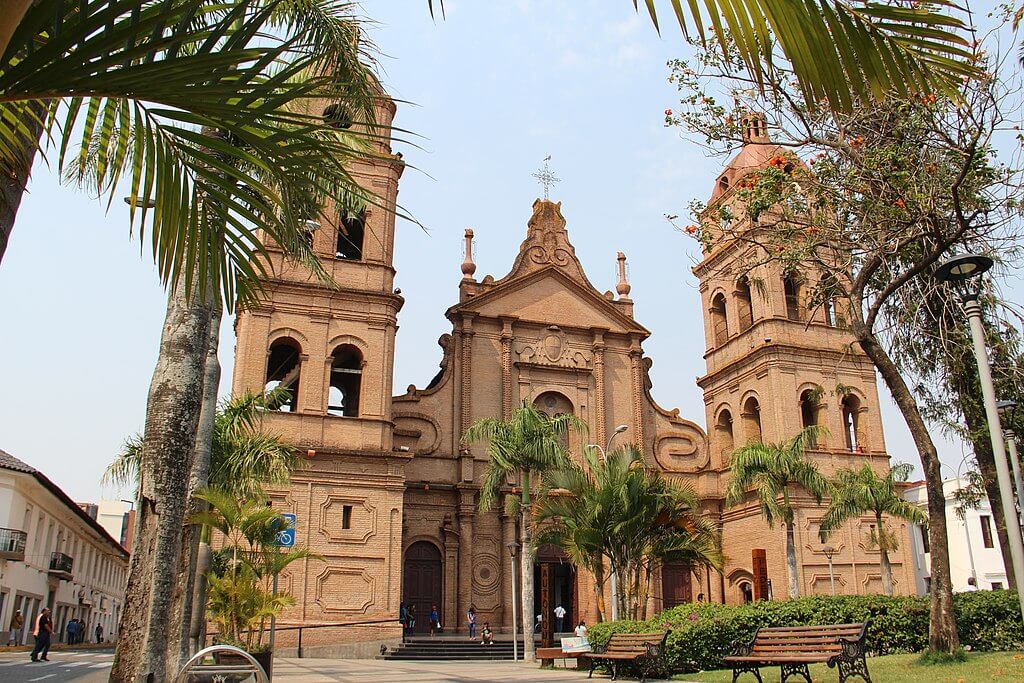
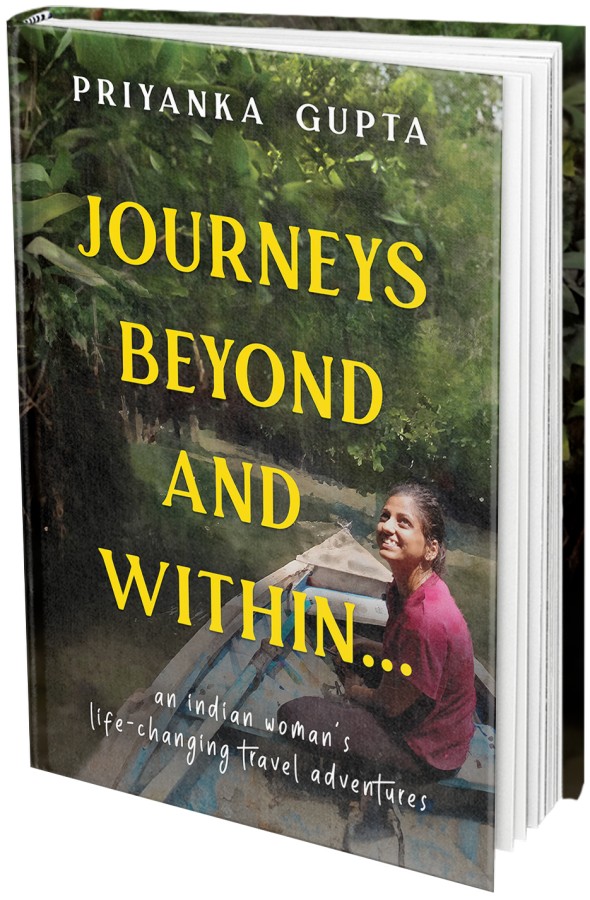
This looks like a beautiful place! I would love to visit Santa Cruz one day. Thank you for sharing us information about the best places to eat and where to stay in Santa Cruz.
Thank you William for the lovely comment. Do visit and let me know how it goes.
Wow, to get so explore so much time in South America. Santa Cruz sounds exciting. Must have. A lot of old heritage architecture? Where did you stay?
Hey. Thank you for the comment. I now realize I was lucky to explore South America at such leisure. I have written above the hostel I stayed at.
Wow. beautiful pictureof teh jaguar. I’d love to see them in the wild. Haven’t bee to this part of Bolivia yet.
Thanks, Sue. Please visit this part of Latin America for jaguars. You won’t regret it 🙂